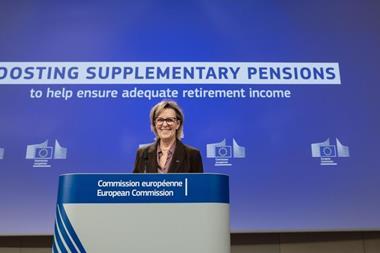ITALY - Figures released by MEFOP, the Association for the Development of the Italian Pension Fund Market, present a confused picture of the development of second-pillar pension provision in Italy.
Investment return data presented last week confirmed the positive impact of the TFR reform of 2006 has run out of steam - a worry that Covip, the Italian pension regulator, had expressed as early as June last year.
Figures show that between 2007 and 2008, so-called “closed” pension schemes - those providing pensions to workers in a specific sector of the economy - have only managed to increase the number of members by 3.3%, whereas open pension schemes fared better, as the number of members increased by 6.2% over the same period.
Closed pension schemes had just over two million members by the end of last year while open schemes had roughly 793,000 members.
Between them, closed and open pension funds now manage around €18.5bn of assets, and have increased assets held by 20% and 6.9% respectively.
The number of workers with individual pension plans (Pips) have increased by 44.4% to 1.4 million members but the total number of workers with plans for a private retirement pension were 4.9 million by the end of 2008, up by 7.2% from last year, and very far from the 12 million eligible employees.
Workers have been required to specify since 2006 whether they wanted to transfer any potential severance pay (Trattamento di Fine Rapporto) to the second pillar pension system, or allow it to be held in a fund by their employer, so the number of pension members did rise by more than 50% during 2007.
The performance of funds during 2008 appears to have put workers off becoming members of a private pension scheme as MEFOP data shows closed pension funds lost 6.3% of their value last year, while open funds plummeted 14.1%.
Each type of portfolio, save those made up exclusively of bonds, made negative returns with share portfolios losing between 25% and 30% of their value.
This is at the same time as the TFR was revalued at 2.7% last year, meaning workers who have kept their severance pay within their firm saw a modest increase on their pension pot.
Shortly after the figures were released, labour minister Maurizio Sacconi stressed the government will not push for an immediate reform of the Italian pension system.
While prime minister Silvio Berlusconi has stated that he wishes to raise spending on social security, he has clearly said reform of the pension system is not among his priorities.
However, the Organisation for Economic Co-Operation and Development (OECD), said this week in its Economic Outlook Interim Report that Italy has little scope for active economic policy in dealing with the ongoing global recession, and one of the things it should focus on is pension reform.
If you have any comments you would like to add to this or any other story, contact Julie Henderson on + 44 (0)20 7261 4602 or email julie.henderson@ipe.com














No comments yet